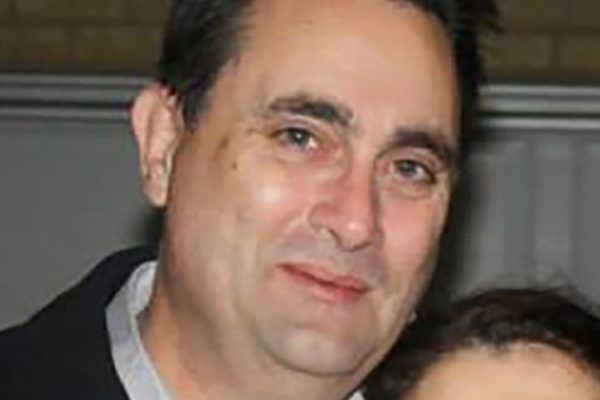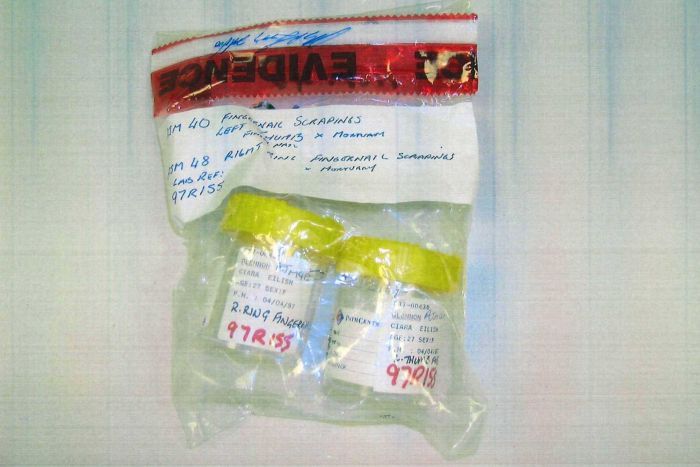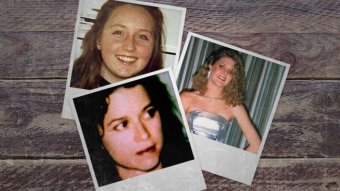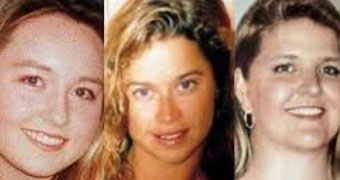
By Andrea Mayes
 Photo: Convicted rapist Bradley Robert Edwards is accused of murdering three women in the 1990s. (Facebook)
Photo: Convicted rapist Bradley Robert Edwards is accused of murdering three women in the 1990s. (Facebook)Crucial DNA evidence found on fingernail samples in the Claremont serial killings case was “very unlikely” to have become accidentally contaminated with DNA from accused murderer Bradley Edwards, a senior forensic scientist has testified.
Key points:
- Bradley Edwards’s DNA was found under the fingernails of one victim
- A pathologist’s DNA, who did not handle the sample, was also detected
- The forensic evidence is crucial in the Claremont serial killings trial
This is despite 11 other cases of contamination of samples relating to the case being recorded, the WA Supreme Court has heard.
Former Telstra technician Edwards, 51, is on trial for the wilful murders of Sarah Spiers, 18, Jan Rimmer, 23, and Ciara Glennon, 27, in 1996 and 1997.
The young women all disappeared from the wealthy suburb of Claremont late at night after enjoying evenings out with friends.
In his fifth and final day on the witness stand, senior PathWest scientist Scott Egan, who has worked at the state-run pathology laboratory since 1996, told the trial there was no foreseeable way Edwards’s DNA could have been transferred to samples of Ms Glennon’s fingernails by accident.
The prosecution has argued his DNA was lodged there as she fought for her life, scratching and clawing at him in the process.
Edwards’s defence team has conceded his DNA was found on samples from the fingernails, but disputed how it came to be there, suggesting that it could have been transferred while the samples were being stored at PathWest.
Two DNA samples never made contact
When Ms Glennon’s fingernail samples arrived at PathWest in April 1997, the lab already had a record of Edwards’s DNA — on intimate samples from the rape of a 17-year-old girl at Karrakatta Cemetery in 1995, a crime to which he finally admitted late last year.
But the trial has previously heard the samples were examined at the laboratory 14 months apart and were never opened at the same time.
 Photo: Ciara Glennon, 27, left the Continental Hotel in Claremont and disappeared on March 15, 1997. Her body was later found in bushland. (Fairfax Media)
Photo: Ciara Glennon, 27, left the Continental Hotel in Claremont and disappeared on March 15, 1997. Her body was later found in bushland. (Fairfax Media)Asked by defence counsel Paul Yovich SC whether it was impossible for Edwards’s DNA from the rape victim to contaminate Ms Glennon’s fingernails, Mr Egan said it was very unlikely.
“In our field of work, impossible is not a word we use very often,” he told the court.
But Mr Egan said the laboratory would have been cleaned hundreds if not thousands of times in the 14-month period from February 1996 to April 1997 and PathWest had not identified any possible way for the fingernail samples to have been accidentally contaminated by the rape samples.
Pathologist’s DNA found on crucial fingernail samples
This week the trial heard of 28 “quality issues”, or mistakes, PathWest had recorded relating to the Claremont case, ranging from the mislabelling of samples to the contamination of samples by scientists.
Today Mr Egan told the court in two of the contamination instances, DNA from PathWest scientist Laurie Webb was found on samples relating to Ms Rimmer and Ms Glennon, despite the fact that he was not involved in their processing or handling.
One of the samples — a knife examined by PathWest in connection with Ms Glennon — was examined in 1998 and Mr Egan said records from the lab could not confirm whether Mr Webb was even present at work on the day the item was processed.
 Photo: Fingernail scrapings from Ciara Glennon were sealed in forensic evidence containers. (Supplied: Supreme Court of WA)
Photo: Fingernail scrapings from Ciara Glennon were sealed in forensic evidence containers. (Supplied: Supreme Court of WA)He said although scientists took all precautions thought necessary at the time to prevent contamination in the lab, staff worked in close proximity to each other.
The item examination and DNA laboratories contained computers used for administration purposes, and staff using those would not have to wear protective clothing or gloves, he said.
“You might have to walk past someone to get from one end of the laboratory to another,” Mr Egan said in answer to a question about how Mr Webb’s DNA could have been transferred.

Sarah Spiers. Jane Rimmer. Ciara Glennon. Three women whose names were etched into Perth’s consciousness more than 20 years ago.
He agreed with Mr Yovich’s suggestion that Mr Webb’s DNA could have been “in the ambient environment”, including on chairs, equipment and benches in the laboratory.
Mr Webb was sacked from PathWest in 2016 for unethical conduct involving breaches of testing protocols, such as failure to conduct quality control testing and failure to have his work peer reviewed.
Mr Webb’s DNA was also found on Ms Rimmer’s fingernail samples, which he played no part in handling, and a PathWest investigation concluded his DNA had been transferred as a result of him being “in the near vicinity” of where the samples were analysed, Mr Egan said.
Under questioning from Mr Yovich, Mr Egan conceded that coughing, sneezing, talking and even breathing on or near exhibits may result in DNA being transferred onto them.
Different victim’s DNA found on Claremont sample
The court also heard more details of another instance of contamination where DNA matching the female victim of a completely unrelated crime was found on a twig taken from the area where Ms Rimmer’s body was discovered in Wellard, south of Perth.
Samples from that crime, which occurred in January 2002, were processed at PathWest five days before the twig was swabbed in the same laboratory using an alco-wipe.
Parts of the alco-wipe were found to contain the crime victim’s DNA, Mr Egan confirmed, but he said she was quickly ruled out as a likely suspect in Ms Rimmer’s murder as she would have been 13 years old at the time.
He said PathWest had been unable to pinpoint the exact way her DNA had been transferred to the twig, but had concluded it must have been through equipment used during the processing of the samples.
This was despite the fact the tubes used to store the samples were disposed of after each use, and benches and non-disposable equipment were thoroughly cleaned.
The marathon trial has now finished its 13th week and there are just two witnesses to give evidence relating to the DNA yet to come.
One of these is the highly-anticipated testimony from Jonathan Whitaker, considered a world expert on DNA techniques involving tiny amounts of cellular material, who is flying in from the UK.
The trial will resume on Monday.
Topics: murder-and-manslaughter, law-crime-and-justice, courts-and-trials, perth-6000, wa, claremont-6010
















